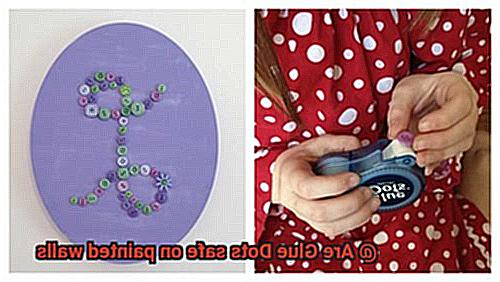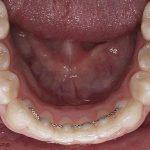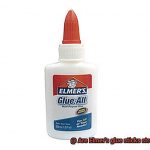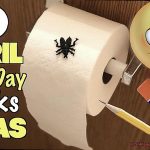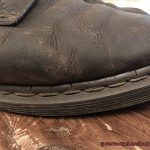Imagine this: you’ve finally settled into your dream home, bursting with excitement to put your personal stamp on it. As you brainstorm ways to jazz up your walls with artwork and decorations, you stumble upon Glue Dots – the adhesive superheroes that seem too good to be true. But wait a minute. You can’t help but wonder, “Are Glue Dots safe on painted walls?”
In this article, we’re diving headfirst into the very question that keeps homeowners and decorators awake at night. We’ll uncover the secrets, risks, and rewards of using Glue Dots on your freshly painted walls. So if you’re dying to add some pizzazz without sacrificing wall integrity, get ready for an eye-opening journey through the dos and don’ts.
Stay tuned as we walk the tightrope between creative expression and potential wall chaos.
What are Glue Dots?
Contents
- 1 What are Glue Dots?
- 2 Factors to Consider When Using Glue Dots on Painted Walls
- 3 Benefits of Using Glue Dots on Painted Walls
- 4 How to Apply and Remove Glue Dots Safely
- 5 Tips for Using Glue Dots on Painted Walls
- 6 Are Glue Dots Suitable for All Types of Paint and Wall Surfaces?
- 7 Advantages of Using Glue Dots Instead of Traditional Liquid Glues
- 8 Common Mistakes to Avoid When Using Glue Dots on Painted Walls
- 9 Conclusion
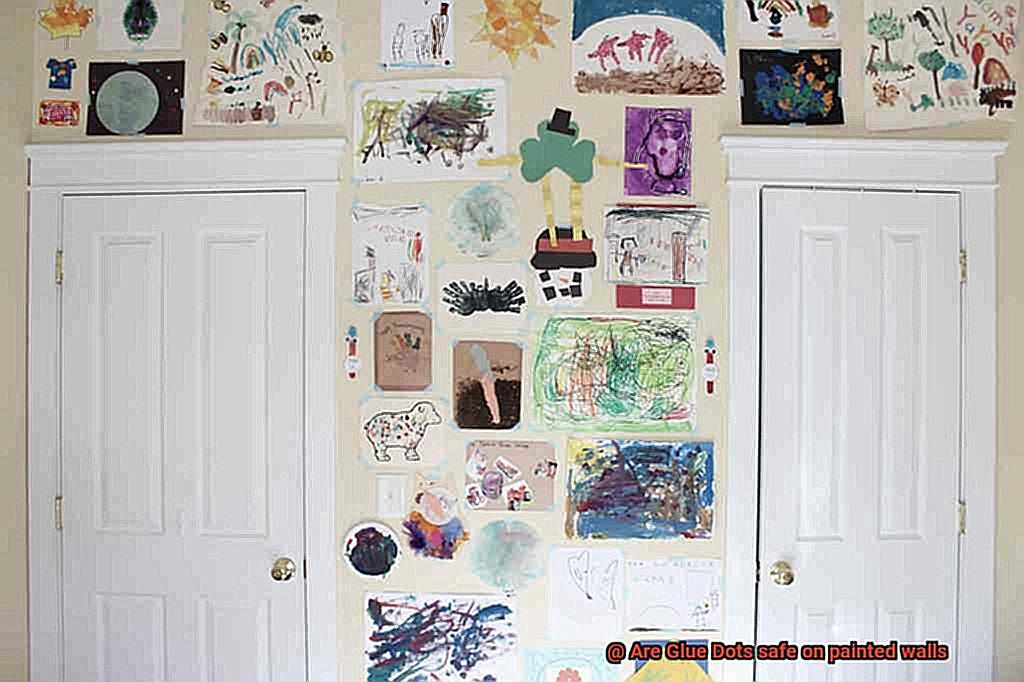
Glue Dots are small, circular dots made of a sticky adhesive that is used to bond materials together. They are convenient and easy to use, eliminating the mess and hazards associated with traditional liquid glues or hot glue guns. Glue Dots come in different strengths and sizes to accommodate various bonding needs, ranging from temporary bonding to permanent adhesion.
These adhesive dots are versatile and can be used on a wide range of materials such as paper, plastic, metal, fabric, and wood. They are commonly used in crafting projects like scrapbooking, card making, and DIY decorations. Glue Dots are also popular in packaging applications to secure products or promotional materials in place.
One of the advantages of Glue Dots is their convenience and ease of use. They come in rolls or sheets, with each dot being individually perforated for easy application. This allows for quick and clean bonding without the need for additional tools or equipment.
Another advantage is their versatility. Glue Dots can adhere to different surfaces, including painted walls. However, it is important to consider the compatibility of Glue Dots with painted walls based on factors such as the type of paint and the condition of the wall surface.
To use Glue Dots on painted walls, it is important to clean the wall surface beforehand to remove any dust or debris. Choose the appropriate size and strength of Glue Dot based on the weight and size of the object you want to stick to the wall. Gently press the Glue Dot onto the object, then firmly press it onto the wall surface without applying excessive pressure.
When removing objects from painted walls that have been attached with Glue Dots, gently peel off the dot. If any residue is left behind, you can try using a mild adhesive remover or rubbing alcohol to clean the area.
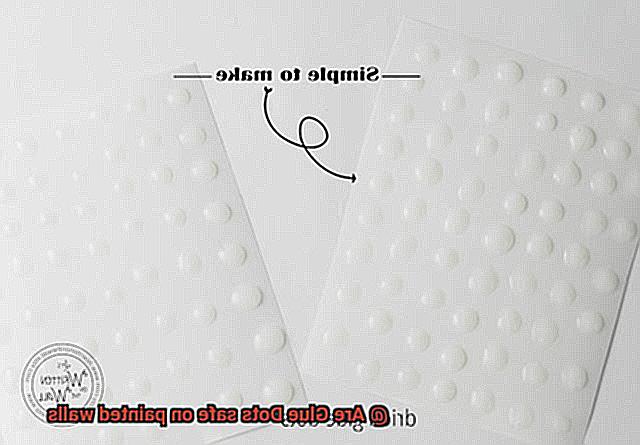
Factors to Consider When Using Glue Dots on Painted Walls
Using glue dots on painted walls can be a convenient way to hang or attach items without causing damage. However, before you start sticking, there are several factors to consider to ensure a successful and safe application.
Firstly, take into account the type of paint used on the walls. Different finishes, such as matte, satin, or glossy, can impact the adhesion and removal of glue dots. Matte finishes generally provide better adhesion compared to glossy ones. So, check the paint type and choose glue dots that are compatible with it.
In addition to paint type, consider the texture of the wall surface. Smooth walls provide a better surface for adhesive attachment compared to textured walls. If your wall has a rough or uneven texture, it may be more challenging for the glue dots to stick securely.
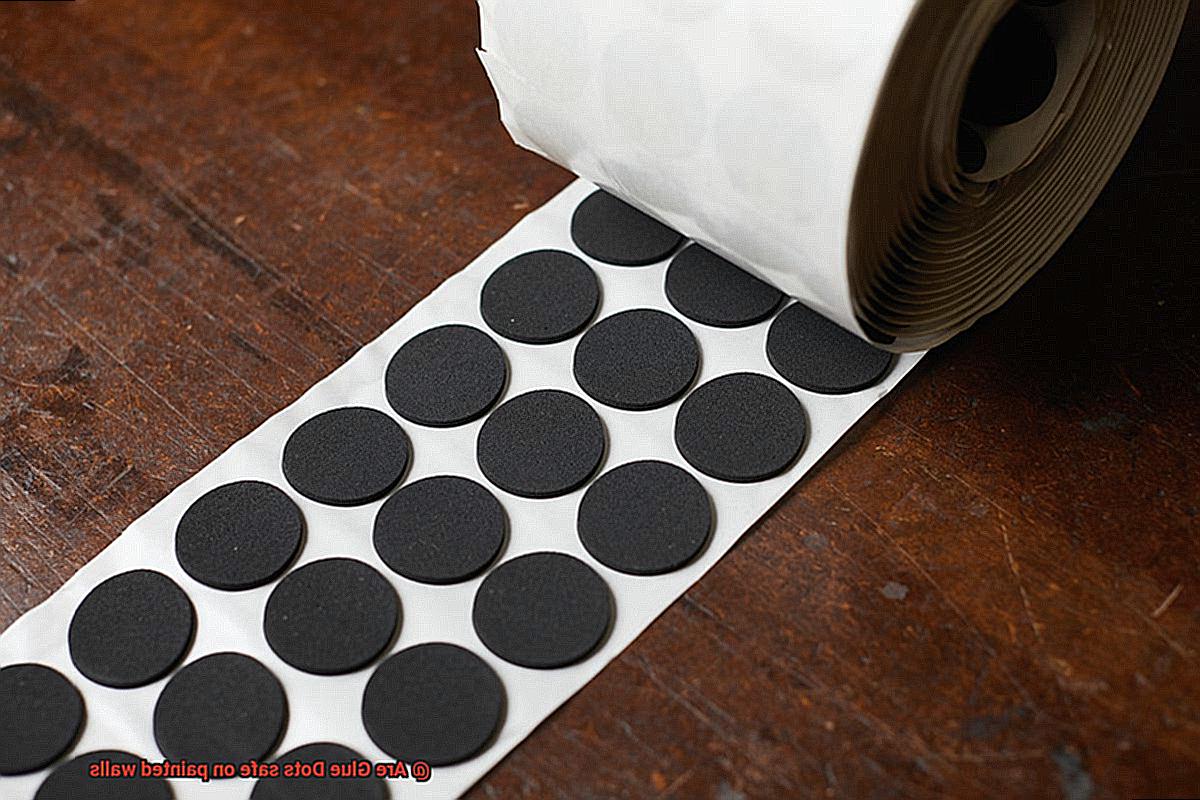
Before using glue dots on painted walls, assess the condition of the walls. If there are cracks, chips, or peeling paint, using adhesive products like glue dots may not be recommended as they can further damage the wall surface. Repair any damages before applying glue dots.
Next, think about the weight and size of the item you want to hang or attach. Ensure that the adhesive strength of the glue dots matches the weight and size requirements. Using insufficient adhesive strength can lead to items falling off the wall, while excessive strength may cause damage upon removal.
Consider how long you intend to keep the item attached to the painted wall. Glue dots are generally designed for temporary applications, and their adhesive strength may diminish over time. Prolonged use can result in reduced adhesion and potential damage upon removal.
It is essential to understand how to properly remove glue dots from painted walls without causing any damage. Some glue dots are designed for easy removal without leaving residue or damaging the paint, while others may require specific techniques or solvents for safe removal. Follow the manufacturer’s instructions for the appropriate removal process.
Take into account the temperature and humidity levels in the room. Extreme conditions can affect the performance of glue dots on painted walls. High humidity or heat can weaken the adhesive strength, leading to items detaching from the wall. It is advisable to avoid using glue dots in areas with fluctuating temperature or high humidity.
Finally, before applying glue dots to a visible part of the painted wall, conduct a test in an inconspicuous area. This will allow you to observe how the glue dots adhere and whether they leave any residue or damage the paint upon removal.
Benefits of Using Glue Dots on Painted Walls
Using glue dots on painted walls offers several benefits:
- Damage-free: Glue dots provide a strong bond without causing damage to painted walls. Unlike traditional adhesives like tape or glue, glue dots do not leave behind any residue or marks when removed. This makes them ideal for temporary displays or seasonal decorations.
- Easy to use: Glue dots are convenient and user-friendly. They come in pre-cut shapes or rolls, making application quick and effortless. Simply peel off the backing and press the glue dot onto the desired area of the painted wall. There’s no need for additional tools or materials.
- Secure hold: Despite their small size, glue dots can securely hold lightweight objects like small decorations, posters, or artwork. This eliminates the need for nails or screws that can cause permanent damage to the wall surface. Glue dots offer a reliable hold without compromising the integrity of the paint.
- Versatile: Glue dots allow for flexibility in decorating or organizing a space. They can be easily repositioned or removed without damaging the paint or wall surface. This gives you the freedom to experiment with different layouts or designs without any consequences.
- Safe for households: Glue dots are non-toxic and do not emit any harmful fumes, making them a safer option for households with children or pets. You can use them without worrying about harmful chemicals or odors in your home. Furthermore, glue dots are less likely to be accidentally ingested compared to liquid glues.
- Convenient for renters: Using glue dots on painted walls is perfect for those who are renting a space and want to avoid any potential charges for repairs when moving out. Glue dots offer a secure hold without causing any damage to the wall surface, allowing you to personalize your living space without any repercussions.
How to Apply and Remove Glue Dots Safely
To safely apply Glue Dots on painted walls, it’s crucial to start with a clean surface. Before sticking the dots, make sure to wipe down the wall using a mild detergent and water solution. This will remove any dust or dirt that could interfere with the adhesive.

Once the wall is clean, choose the appropriate size of Glue Dot for your project. Larger dots are better for heavier objects, while smaller dots work well for lighter items.
Next, carefully peel off the liner from one side of the Glue Dot, being cautious not to touch the adhesive. This can reduce its stickiness and affect its performance.
With the liner removed, firmly press the exposed adhesive side onto the back of the object you want to attach. Apply even pressure to ensure a secure bond.
Finally, press the object, with the Glue Dot attached, firmly onto the painted wall. Again, use even pressure to create a strong connection between the object and the wall surface.
Removing Glue Dots:
To remove Glue Dots from painted walls without causing damage, start by gently peeling off one corner of the dot using your fingernail or a flat-edged tool like a credit card. Be careful not to scrape or scratch the painted surface as you do this.
Once you’ve lifted one corner, slowly peel off the Glue Dot from the wall in a gentle and steady motion. Avoid pulling too hard or too quickly, as this can cause the paint to peel off along with the dot.
If there is any adhesive residue left on the wall after removing the Glue Dot, use rubbing alcohol or a mild adhesive remover on a clean cloth to gently rub it away. Test these substances on an inconspicuous area first to ensure they don’t damage or discolor the paint.
In case removing a Glue Dot causes minor damage to the painted surface, such as scuffs or marks, you can touch up the affected area with paint that matches your wall color. Apply a small amount to a brush or cotton swab and carefully cover the damaged area. Allow the paint to dry completely before assessing whether any further touch-ups are needed.
Tips for Using Glue Dots on Painted Walls
When it comes to using Glue Dots on painted walls, there are a few tips to keep in mind to ensure that they are used safely and effectively.
Consider the type of paint
Glue Dots generally work well on most types of paint, but it is always a good idea to test them in an inconspicuous area before using them extensively. Some paints may be more prone to damage or discoloration when adhesive products are applied. By testing in a small area first, you can ensure that the Glue Dots will not harm or leave marks on your painted walls.
Avoid freshly painted walls
It is recommended to avoid using Glue Dots on freshly painted walls. The paint needs time to fully cure and harden, typically around 30 days. Using adhesive products too soon can potentially damage the paint or cause it to peel off. Waiting until the paint has fully cured will ensure a strong bond without any damage to the paint surface.
Clean the wall surface
Before applying Glue Dots, make sure the wall surface is clean and free from dust or debris. This will ensure better adhesion and prevent any particles from getting trapped under the dots. Use a mild cleaner or soap and water solution to wipe down the wall, and allow it to dry completely before applying the Glue Dots.
Choose the right size and amount
It is important to use the right size and amount of Glue Dots for the item you are attaching to the wall. Using too few or too small dots may not provide enough support, while using too many or larger dots may leave residue or damage the paint when removed. Consider the weight and size of the item you are attaching, and choose the appropriate size and strength of Glue Dots accordingly.
Apply with care
When applying Glue Dots, gently press them onto the wall surface and hold for a few seconds to ensure proper adhesion. Avoid sliding or dragging the dots as this can create friction that may damage the paint. Applying the Glue Dots with a gentle touch will ensure a secure bond without any harm to the painted surface.
Are Glue Dots Suitable for All Types of Paint and Wall Surfaces?
Factors to Consider when Determining if Glue Dots are Suitable for a particular paint and wall surface:
Type of Paint:
Different types of paint, such as latex, oil-based, or acrylic, may have different adhesion properties. It is like navigating a maze of possibilities. The wrong glue dot applied to the wrong type of paint could result in a sticky mess or even damage to the surface. To avoid any potential disasters, it is recommended to test a small area of the painted wall with a glue dot. This cautious approach will allow you to observe any damage or residue before committing to using glue dots on the entire surface.
Condition of the Painted Surface:
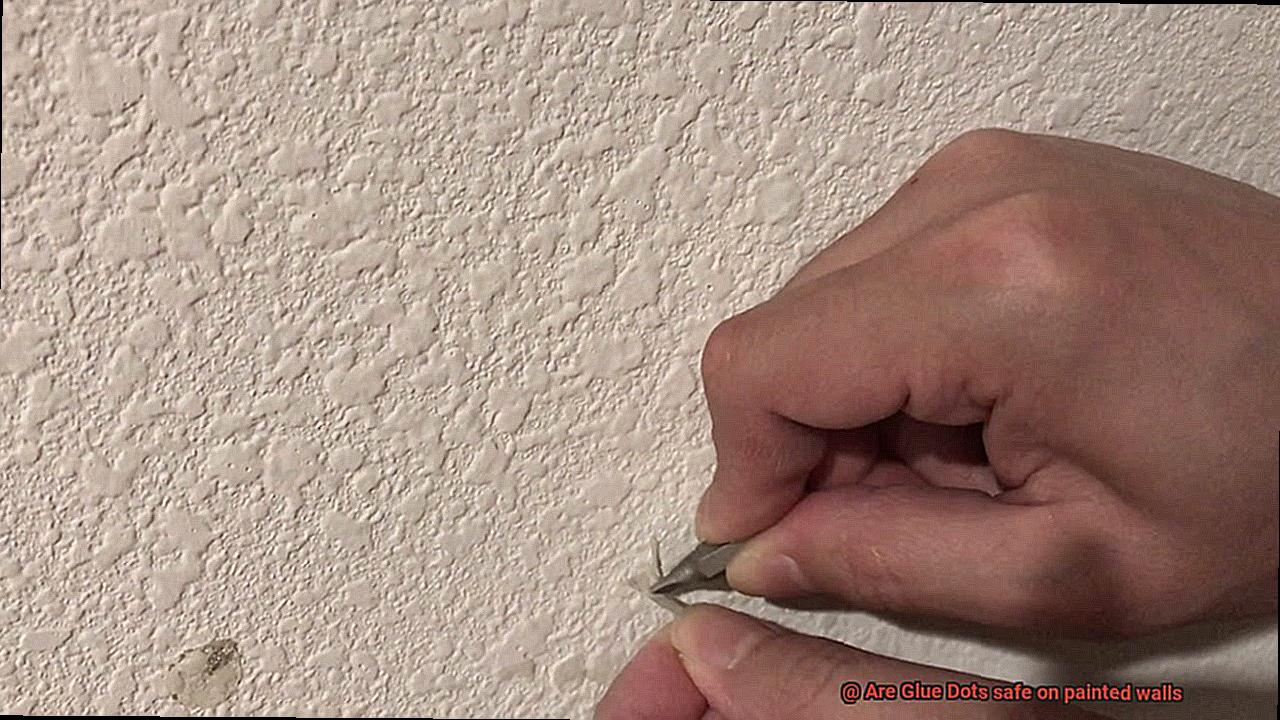
Imagine a delicate dance between the glue dots and the painted surface. If the paint is already peeling or in poor condition, introducing glue dots into the equation may be like throwing gasoline on a fire.
The adhesive properties of the glue dots may exacerbate any existing issues and further damage the surface. It is crucial to ensure that the paint is well-adhered to the wall before applying glue dots. Take a close look at the surface, checking for any signs of peeling or flaking paint. If everything seems solid, then you can proceed with confidence.
Texture of the Wall Surface:
Smooth sailing or rough waters? The texture of the wall surface can play a significant role in determining whether glue dots will adhere properly. Smooth and flat surfaces provide an ideal foundation for the adhesive to bond securely. However, textured or rough walls may present challenges as the uneven surface might hinder proper adhesion.
To test the waters, apply a glue dot to a small area of the wall surface and observe its adherence. This simple experiment will help you determine if your walls are compatible with glue dots.
Type of Wall Surface:
Not all surfaces are created equal when it comes to adhesive compatibility. Delicate surfaces, such as wallpaper or delicate finishes, require a delicate touch. The adhesive properties of glue dots may not be suitable for these surfaces, as they are more prone to damage or discoloration when adhesive is applied.
It is important to consider the material and finish of your wall surface before deciding to use glue dots. If you are uncertain about the compatibility, it is always better to err on the side of caution and explore alternative hanging options.
Surface Preparation:
Like a blank canvas awaiting an artist’s brushstrokes, painted walls need proper preparation before applying glue dots. Dust and debris can hinder adhesion, creating an unstable foundation for the adhesive.
To ensure a smooth and successful bond, it is recommended to clean the surface thoroughly before applying glue dots. Use a gentle cleanser or a damp cloth to remove any unsightly blemishes or dirt. This meticulous preparation will enhance the adhesion of the glue dots and minimize the risk of any damage.
Manufacturer’s Guidelines:
In the vast sea of paint and wall surfaces, it is easy to get lost. If you find yourself adrift in uncertainty, seek guidance from the manufacturer’s instructions. Each brand may have its own recommendations and guidelines specific to their product.
By consulting the manufacturer’s guidelines or seeking professional advice, you can navigate through the murky waters with confidence. Their expertise will provide clarity and ensure that you make informed decisions regarding the compatibility of glue dots with your specific paint and wall surface.
Advantages of Using Glue Dots Instead of Traditional Liquid Glues
Glue dots offer numerous advantages over traditional liquid glues. One of the biggest advantages is their mess-free application. Unlike liquid glues that can be messy and require careful handling, glue dots are pre-formed adhesive dots that are easy to handle and apply. They come in a convenient roll or sheet format, allowing for quick and precise placement on any surface.
Another advantage of using glue dots is their instant bonding capability. Unlike liquid glues that require time to dry, glue dots provide immediate adhesion. This is especially beneficial for projects that require immediate bonding, such as crafting or home decor projects. With glue dots, you can complete your project efficiently without waiting for the glue to set.
Glue dots are also highly versatile. They can be used on various materials, including paper, fabric, plastic, metal, and even painted walls. They adhere well to different surfaces, making them suitable for a wide range of applications. Whether you’re working on scrapbooking, card making, or attaching decorations to painted walls, glue dots can provide a reliable bond.
Unlike liquid glues that can cause materials to shrink or warp when drying, glue dots maintain the integrity of the surface they are applied to. This is particularly important when working with delicate materials or surfaces such as painted walls. Glue dots allow you to securely attach items without causing any damage or alteration to the underlying surface.
Additionally, glue dots are easily removable without leaving any residue behind. Traditional liquid glues often leave behind sticky residue that can be difficult to remove without damaging the surface. Glue dots, on the other hand, can be easily removed without any trace left behind. This makes them ideal for temporary applications or situations where you may need to reposition or replace items.
Furthermore, glue dots are considered to be safe for use, even for children. They are non-toxic and do not emit strong fumes like some liquid glues. This makes them a preferred choice for various school projects or crafts that involve children. With glue dots, you can ensure a safe and enjoyable crafting experience without worrying about harmful chemicals.
Common Mistakes to Avoid When Using Glue Dots on Painted Walls
When it comes to using Glue Dots on painted walls, there are some common mistakes that people make. By avoiding these mistakes, you can ensure that your painted walls remain undamaged and that your adhesive experience is smooth and successful.
- Failure to properly prepare the wall: One of the most common mistakes when using Glue Dots on painted walls is not properly preparing the wall surface. Before applying Glue Dots, it is important to clean the wall surface thoroughly. Any dirt, dust, or grease on the wall can prevent the adhesive from sticking properly. To avoid this mistake, use a mild cleaning solution and a soft cloth to gently wipe down the wall surface before applying the Glue Dots. This will ensure a clean and smooth surface for the adhesive to adhere to.
- Using too many Glue Dots: Another mistake that people often make is using too many Glue Dots for a single item. While it may seem like using more adhesive will provide better support, using too many Glue Dots can actually damage the paint when it comes time to remove the item. Excessive pulling or tugging on the Glue Dots can cause the paint to peel off with them. To avoid this mistake, it is important to follow the instructions on the package for recommended usage and use only the necessary amount of Glue Dots for your item.
- Applying Glue Dots on freshly painted walls: Applying Glue Dots too soon after painting is another common mistake that people make. It is important to give your painted walls time to fully cure and harden before applying any adhesives. Applying Glue Dots too soon can result in them not adhering properly or even pulling off chunks of paint when removed. To avoid this mistake, give your painted walls at least a week or two to fully cure before using Glue Dots.
- Not considering the weight of the item: Glue Dots are designed for lightweight items. One mistake that people often make is not considering the weight of the item they are hanging. Attempting to hang something heavy with Glue Dots can lead to failure and damage to the wall. To avoid this mistake, make sure to carefully consider the weight of the item you are hanging and choose an appropriate adhesive option if it is too heavy for Glue Dots.
- Not following instructions: Lastly, not following the instructions on the package is a common mistake that people make when using Glue Dots on painted walls. Each brand of Glue Dots may have specific instructions for application and removal. It is important to read and follow these instructions carefully to ensure the best results and avoid any potential damage to your painted walls.
Conclusion
In conclusion, Glue Dots are a safe and reliable option for hanging items on painted walls.
Their adhesive properties ensure a strong bond without causing any damage or leaving residue behind. With Glue Dots, you can confidently display your favorite artwork, photographs, or decorations without worrying about unsightly marks or peeling paint.
These innovative adhesive dots offer convenience and peace of mind, making them the perfect choice for homeowners and renters alike.

